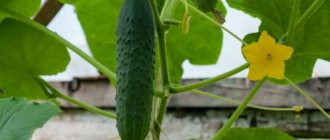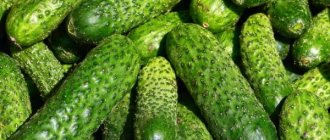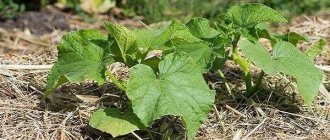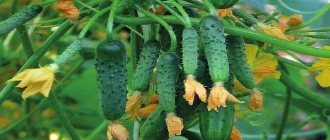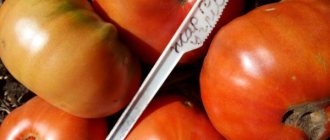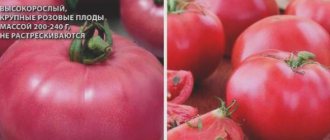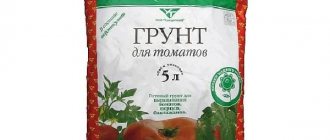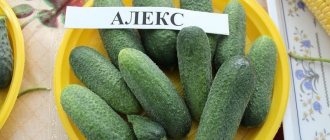Vegetable growing » Cucumbers
0
2236
Article rating
Kira Stoletova
The Picnic cucumber variety belongs to F1 hybrids, which gives it many advantages that have attracted the attention of gardeners.
Characteristics of hybrid cucumbers Picnic
Description and characteristics of the variety
The hybrid variety Picnic f1 was created by specialists in collaboration with the Research Institute for Breeding Vegetable Crops. In 2003, it was included in the Russian State Register. It is recommended to grow cucumbers in film shelters in private gardens and small farms. If the climate is suitable, you can plant them in open ground or breed them in closed greenhouses. Recommended regions are from Northern to Central and Middle Volga.
Characteristics of the crop: parthenocarpic, does not require pollination. The bushes are indeterminate, their stems reach 2-2.5 meters. The plants are moderately branched and densely covered with leaves with jagged edges. The formation of ovaries is bunched, from 3 to 8-10 greens develop in bunches. They ripen on the 43-45th day after the sprouts appear.
Description of the fruits: 10-12 cm in length, 3-4 cm in diameter. They weigh 90-100 g. There are small light stripes and small tubercles on the skin. The pulp is juicy, crispy, has a sweetish taste and pleasant aroma. You can use greens for pickling and fresh salads.
In hybrids, especially parthenocarpic ones, the grains do not reach maturity and do not sprout. It is recommended to buy new seeds every year.
Pests and diseases
Pests are easy to get rid of
Beginners and experienced gardeners are afraid of encountering pests and diseases on their site. F1 hybrids most often get sick due to the carelessness of the gardener.
Pests
In the first stages of parasite damage, it is easy to remove:
- The whitefly is a small winged insect that feeds on plant sap, causing the leaves to rot. A solution of garlic and water helps against whiteflies (150 garlic per 1 liter of water). The entire bush must be sprayed with the solution.
- Aphids are small green insects. The pest drinks juice from the leaves. As a result, aphids deprive the bushes of healthy leaves and cause rot. Aphids should be sprayed with a solution of wood ash, soap and water (2.5 liters of water per 50 g of wood ash and 20 g of soap).
- Spider mites are insects no more than 1 mm in length, velvet in color. The appearance of spider mites is characterized by cobwebs left on the leaves. Ticks drink the sap of the plant. To combat them, prepare a soap solution (1 tablespoon of soap per 1 liter of water) and spray the plant with it.
- A slug is a mollusk with a brown or gray body. He crawls, leaving behind mucus. Slugs feed on the leaves of bushes and spoil the fruits. The simplest way to deal with them is manually. You just need to inspect the bushes for the presence of these pests and collect them. It is also recommended to scatter sand paths between the bushes, which serves as a trap for slugs, as they get stuck in the sand.
Traditional methods of pest control have been proposed, but the most effective and at the same time expensive option is branded insecticides.
Diseases
Diseases arise due to mistakes made during care. Picnic resists any disease, but it needs help.
- Powdery mildew. All leaves of the bush are covered with white-yellow spots. Powdery mildew causes leaves to wilt and stop fruiting. For treatment, a solution of fungicides and water is used (10 g of fungicides per 5 liters of water), but if the disease has gone too far, the plant is destroyed.
- Cladosporiosis. Leaves and fruits become covered with brown rotten spots. To cure a bush, it is not watered for 4 days and treated with foundationazole (10 g of foundationazole per 0.5 liter of water).
- White rot. Sticky white growths appear all over the bush. For treatment, use a solution of urea, water, zinc sulfate and copper sulfate (10 g of copper sulfate, urea, zinc sulfate per 2 liters of water).
- Downy mildew. Yellow spots appear on the leaves. The bush dries out, the leaves fade. Stop watering the bush for 5 days and treat it with a solution of polycarbacin (10 g of polycarbacin per 4 liters of water).
It is recommended to inspect the plant to detect the first signs of any disease. Neglected bushes are destroyed, as they pose a danger to healthy plants.
Advantages and disadvantages
Pros:
- pleasant taste and consistency;
- smooth fruits with excellent appearance;
- high productivity;
- early ripeness;
- ability to set fruit without pollination;
- long fruiting (two months);
- immunity to cladosporiosis, powdery mildew and a number of other ailments;
- the fruits do not outgrow;
- the ability to store and transport crops over long distances for a long time.
Minuses:
- impossibility of obtaining seeds.
Diseases and pests
Diseases can occur for various reasons:
- poor quality planting material or poor preparation for sowing;
- soil contaminated with fungal viruses and other diseases;
- improper planting and care of the crop.
Common diseases include powdery mildew, cladosporiosis, various types of rot, etc.
To prevent their occurrence, preventive treatments are carried out with Trichopolum (5 tablets per 10 liters of water).
Preventive treatments will keep plants healthy
If a dangerous disease, such as basal or root rot, is detected, it is recommended to immediately remove the cucumber bush from the common garden bed, and immediately treat the remaining plants with soda (75 g per liter of water). This will prevent other plants from becoming infected.
For prevention, use foundationazole, copper sulfate, potassium permanganate solution, zinc sulfate, etc.
Dangerous pests include whiteflies, aphids, and spider mites.
To prevent their attack, spray with garlic infusion: 600 g of crushed product must be poured into 10 liters of water and boiled for 3 hours. When the product has cooled, it is diluted with water (1:1). Under each bush add 0.5 liters of infusion.
Landing
Seeds are sown for seedlings in the middle zone in April, in the south - at the end of March. In open ground in the middle zone they are sown at the end of May, in the south 2-3 weeks earlier. The soil should warm up to +14-15 degrees.
Pre-sowing treatment is not necessary if the seeds are sold in a colored shell. This means that they have already been treated with fungicides and growth stimulants.
Untreated seeds are soaked for 30-40 minutes in a one percent solution of potassium permanganate, then washed thoroughly and treated with a biostimulant, for example, Epin.
For seedlings, prepare containers with a diameter of 8-12 cm. The soil is made up of garden soil, peat, several parts of humus and 1 part of sand, if necessary, superphosphate and wood ash are added. Seeds are sown to a depth of 1.5-2 cm, watered and placed in a warm place.
When the sprouts appear, the pots are moved to a sunlit windowsill and the room temperature is set to about +18-20 degrees. After 25 days, the bushes are transplanted into the garden bed.
When choosing a site, you must avoid beds after cucumbers, pumpkins, zucchini, watermelons, and melons. Sunny, windless places on a hill where tomatoes, potatoes, beans, cabbage, peppers, and onions were previously grown are suitable.
For 1 sq. m place no more than 3 bushes.
Agricultural technology
It is recommended to plant Picnic seedlings. To do this, the seeds are sown in mid or late April. Seedlings ready for transplanting must have at least three true leaves. The time for planting seedlings in the ground is May. The planting pattern is the same as for all indents, the main thing is not to create crowding. Usually up to 3 plants are placed on one square meter. After transplantation, the bush is tied to a trellis. Form the plant into one trunk, removing growing side shoots. Be sure to control watering (the soil should not dry out, but the cucumber will not tolerate waterlogging) and fertilization. Nutrition is perhaps one of the main requirements of a hybrid. If it is deficient, the plant will begin to shed part of the ovary to allow the remaining greens to ripen. When growing in open ground, some vegetable growers do not tie up the bush, but allow the stem to spread freely along the ground. True, in this case you need to put a layer of mulch under the stem.
Most gardeners consider the Picnic hybrid to be very promising, and, having grown it once, do not refuse it in the future. The crop is productive, and if agricultural practices are followed, all the ovaries in the bouquet can ripen. Good immunity of the variety allows you to reduce the number of treatments against diseases, thereby increasing the environmental friendliness of the crop. Consumers appreciate the excellent taste, and housewives are happy to use the harvest for various preservations. Over the years of cultivation, there were no complaints about our hero. But the cucumber still has a big disadvantage - you have to buy seeds every year.
The hybrid cucumber Picnic has become especially popular, which stands out among its relatives for its numerous advantages.
Cucumber variety Picnic F1
Growing and care
Watering
Water every 2-3 days or daily if the weather is hot outside. Do not let the soil dry out or be waterlogged for a long time. Fungi appear from excess dampness.
The water is heated to the temperature of the soil and added in the morning or evening.
Loosening the soil
A crust forms on the surface of the soil due to watering. It is carefully pierced with a pitchfork so that oxygen reaches the roots of the cucumber.
Top dressing
Plants are fed with mineral and organic fertilizers containing nitrogen, potassium and phosphorus.
Nitrogen is contained in manure, bird droppings, and infusion of fermented nettles. You cannot overfeed adult plants with it, otherwise they will not bear fruit well. Nitrogen fertilizing is necessary at the beginning of bush development and in smaller quantities during the formation of ovaries.
Phosphorus and potassium are required for cucumbers during flowering and fruiting. These elements are contained in superphosphate, potassium sulfate, potassium nitrate, ammophoska and nitrophoska.
According to the rules of agricultural technology, fertilizing is applied three times per season.
The more often the harvest is carried out, the more actively the bush sets new fruits.
Description
The plant is of an indeterminate type, vigorous, 2.0 - 2.5 meters high. Branching is average, foliage is strong. The stem is ribbed, the internodes are short. The leaves are medium-sized, green, smooth, angular-heart-shaped, with an irregularly serrated edge. Female flowering type. Each leaf node of the variety bears 3 or more fruits (a bouquet can consist of 8 - 10 ovaries). More than 10 bouquets can be formed on the main stem of the Picnic at the same time. But the cucumbers in each of them ripen in turn, although in general the return is very friendly.
Zelentsy are small, gherkin-type, cylindrical, smooth. The skin is elastic, tender, juicy green in color (the color is darker at the stalk), with light stripes about 1/3 of the length. The surface is covered with medium-sized tubercles, the pubescence is white. The flesh is crisp, refreshing, tender and juicy, without voids. There is no bitterness. The aroma is cucumber, pronounced. The taste is excellent, which is indeed confirmed by many gardeners. The length of the fruit is 10 - 12 cm, diameter 3.5 - 4.0 cm. The ratio of length to diameter is almost ideal. The weight of a cucumber is 90 - 100 grams. The commercial quality of the greens is excellent.
